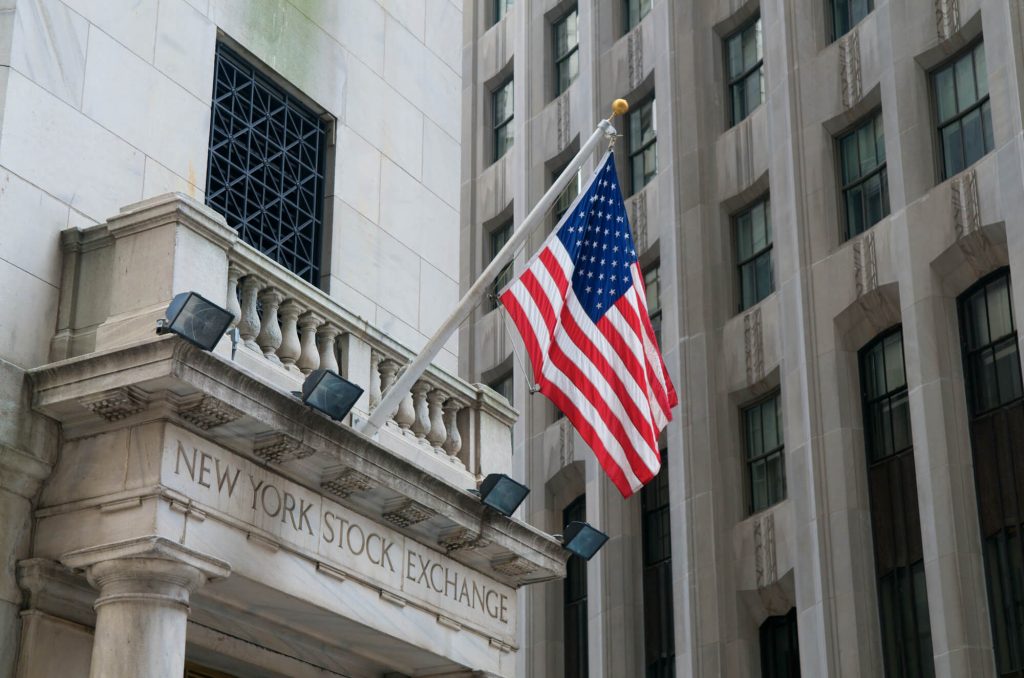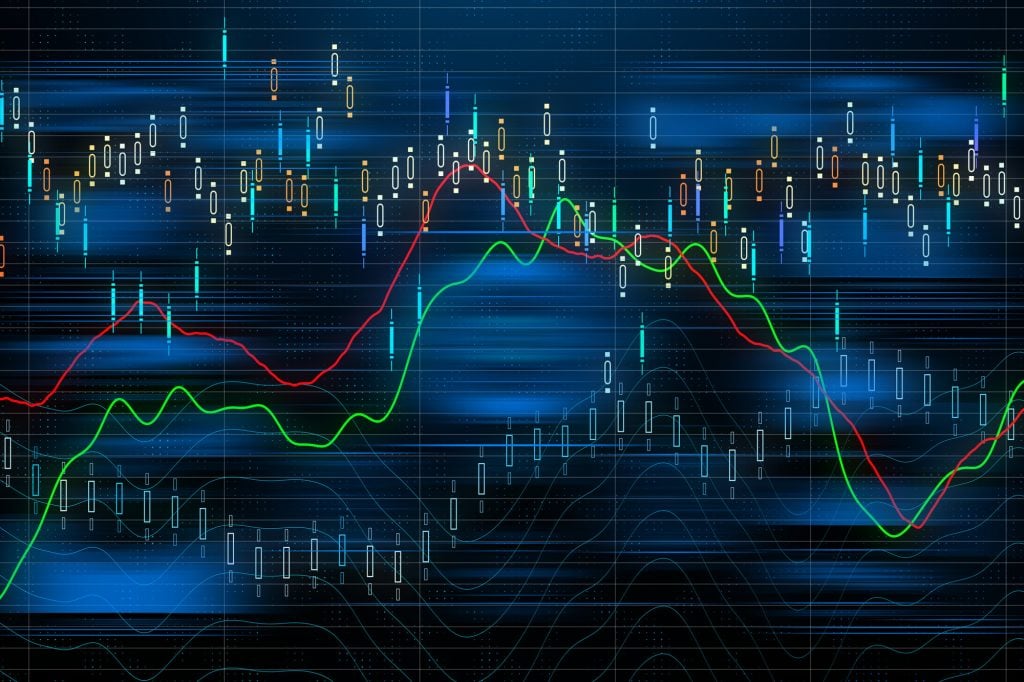Pop quiz! Can you tell us the difference between a bull and a bear market? Can you use the word “arbitrage” in a sentence? What does the acronym “IPO” stand for?
If these stock terms have you drawing a blank, don’t feel bad. According to data published by the New York Post, most Americans can’t speak confidently of basic financial terms.
At Gorilla Trades, we believe that every investment starts by being informed. Every investor should be able to understand basic stock market terminology so that they can more confidently engage with financial publications and understand stock trading terms when they make an investment.
That’s why we’ve prepared this stock market glossary, which contains 40 of the most common stock market terms used by the industry today.

Why Should You Learn Stock Market Terminology?
According to the Wall Street Journal, 2021 saw the rise of the “know-nothing market.” Young investors have gotten involved in the stock market and had huge initial success. But these young investors seem to take strange pride in not knowing even the most basic stock market terminology, even going as far as to brag about their lack of research. One young investor said that it was “all a game.”
The WSJ indicates that because of recent market fluctuations, even poor stock picks are performing well, so this initial success isn’t surprising. But it’s also unlikely to be repeatable.
There’s a reason that seasoned investors spend time researching before making their final selections. Without industry knowhow, there’s no real difference between investing and gambling.
Don’t just roll the dice. Take time to learn a few stock market terms, so that you can be better prepared for your investments.
Stock Terms for Beginners
Below, you’ll find 40 of the most common stock market terms, arranged alphabetically. You can use this list to improve your stock market vocabulary and to become more confident when you speak about the world of investing.
Here are some of the most important stock market terms to know:
Annual Report
An annual report contains information about a company, including cash flow, management strategy, and past performance. This report is typically prepared by the company and is designed to put the “best face” on the business to impress its shareholders.
Arbitrage
Arbitrage refers to the process by which you buy a security on one market and then sell the same security on a different market. For example, you could purchase one stock at $50 per share on one market, but then sell the same stock on another market for $60 per share, yielding a profit of $10 per share.
Averaging Down
Averaging down is the process by which an investor buys more stock in a company as the price goes down. This means that your average purchase price decreases as the stock drops. An investor can use this strategy if they believe that the company’s stock is going to rebound and that their current investments will yield high future results.
Bear Market
The “bear market” is stock terminology referring to a downward trend. If a stock price should suddenly drop, investors speak of the market being “bearish.”
Beta
Beta refers to the relationship between an individual stock price and the movement of the whole market. So, for instance, if a stock has a beta of 2, that means that for every 1 point move in the market, that stock will move 2 points.
Blue Chips Stocks
Blue chips stocks provide a record of high dividend payments. These are the stocks associated with larger corporations. These companies tend to have a reputation of sound financial management.
Bourse
Originally, “bourse” was another term used for the stock market itself. Today, it’s most commonly used to refer to a non-U.S. stock exchange, most often the Paris exchange.
Bull Market
A “bull market” refers to the overall positive performance of the stock market. When an individual stock price performs well, it’s said to be very “bullish.”
Broker
A stock broker is someone who buys or sells a stock on your behalf in exchange for a commission.
Bid
A bid is the amount of money you offer to pay for a stock. It’s related to the ask price, which is what the stock’s seller wants for the stock. The difference between these two prices is known as the spread.
Capital Gains
Capital gains refer to the difference between the sale price of a stock and the price the investor paid for the stock.
Close
The close refers to the time at which the stock market is closed for trading. The NYSE and Nasdaq close at 4 PM.
Day Trading
Day trading is the practice of buying and selling a stock within the same trading day. This can sometimes be known as “active trading.”
Dividend
A dividend is a percentage of a company’s earnings that they pay to their investors. Not all companies offer dividends, but some pay dividends on a regular basis.
Exchange
An exchange is a location in which investments are traded. This would include the NYSE and the Nasdaq.
Execution
An execution occurs when an order to buy/sell has been fulfilled.
Futures Contract
In a futures contract, an investor agrees to buy a specified amount of stock at a particular date in the future. These terms and the price are locked in through a legally binding contract.
Haircut
A haircut is a term used for a very thin spread between the bid and the ask price of an individual stock.
High
A high is basically when a stock achieves a greater price point than was seen previously. A stock can set a record high when it achieves a never-before-seen price, but it’s also common to hear of 30-day highs and other highs within specified periods of time.
Index
Investors and managers rely on the index to measure the success of their investments. A market index tells you how your stock portfolio should perform. For example, a market index of 15% tells you that your stocks should also increase by 15% or more to perform well.
Initial Public Offering (IPO)
A company’s initial public offering (IPO) refers to the sale price of a stock when the company first makes it available to public investors.
Leverage
Leverage refers to borrowing shares from your stockbroker and holding them while they increase. You can then return the shares to your broker, but keep the profits for yourself. This practice is a bit controversial and carries considerable risk.
Low
Low refers to a lower price point for an individual stock or an index. Just like “high,” it’s not uncommon to hear of record lows or 30-day lows.
Margin
A margin account is basically a type of financial loan. With a margin account, you can borrow from a broker to purchase an investment. The margin refers to the difference between the price of the stock and the amount of the loan. This can be dangerous, since your stock may not perform well, leaving you on the hook for the loan.
Moving Average
A stock’s moving average refers to the average price-per-share during a particular period of time. You may hear references to 50-day moving averages or even 200-day moving averages.
Open
This term refers to the time the stock market opens for trading. The stock market opens at 9:30 AM Eastern Time, though pre-market hours begin at 4:30 AM.
Order
An order is related to a bid. When an investor makes a bid to buy or sell a specific amount of stock, it’s known as an order.
Pink Sheet Stocks
Pink sheet stocks are used to refer to “penny stocks.” These stocks are traded at amounts of $5 per share or less. These stocks are usually from smaller companies and aren’t traded on the Nasdaq or NYSE.

Portfolio
Your investment portfolio consists of your collection of investments. A portfolio can be as small as one stock, but there are no limits for the number of stocks and assets in your portfolio.
Quote
A quote conveys information about a stock’s most recent trading price. However, this is usually not given in real-time unless you’re using a broker trading platform. Otherwise, you can expect delays of around 20 minutes before you learn the most recent trading price.
Rally
When the market or an individual stock rapidly rebounds, it’s known as a rally. You may hear this called a “bull rally” or a “bear rally,” depending on how the market is performing overall. For bear markets, an increase as little as 10% can be called a rally.
Sector
A sector refers to a category of stock. For instance, stocks in computers and cell phones would be within the same technology sector. If you know a particular industry well, you may prefer to trade within that sector, as you may already be equipped to predict market performance.
Securities
Securities include stocks, bonds, mutual funds, and any other types of investments that you can buy or sell. Occasionally the term is used as a synonym for stocks, but it’s more accurate to see the term as an umbrella that covers a wider range of exchangeable investments.
Share Market
A share market refers to any market in which a company’s stocks can be bought or sold. The stock market is a type of share market — it’s arguably the best-known example of a share market.
Short Selling
Short selling made national headlines when short-sellers were routed by GameStop investors.
Short selling is a strategy by which you borrow stock shares from your broker with an agreement to return them at a later date. Investors do this when they anticipate that the stock price is poised to plummet.
The idea is simple: They sell the shares when the stock is high, then buy them back when the price is low. Thus, the shares return to the broker, and the investor keeps the profits.
This strategy is only effective if the stock price decreases before you return the shares to the broker. If the stock should increase, the short-seller will have to take the loss in order to fulfill their promise to the broker.
Spread
The spread refers to the value between the bid and the asking price of a particular stock. For example, if the ask price for a given stock is $15 and an investor is willing to pay $10, the spread is $5.
Stock Symbol
A stock symbol is a one to four-character code that represents a company on a stock exchange. Typically, these are abbreviated versions of the company name. Amazon, for example, is symbolized as AMZN. These abbreviations are designed to save space when displayed alongside large numbers of other publicly traded stocks.
Volatility
Volatility refers to the overall price movements of the stock market. It can also refer to the movements of an individual stock. If a stock price rises and falls repeatedly, it is said to be a highly volatile stock.
Some investors can take advantage of these fluctuations by buying stock when the price is low, then selling when the price rebounds.
Volume
Volume can mean two things.
Volume may refer to the number of shares of stock that are traded. Volume is typically measured based on a daily trading period.
Volume may also refer to the number of shares you purchase of a given stock. When you purchase many shares, this is known as a high-volume purchase.
Yield
Yield is a way of measuring the profits you receive from the payment of a dividend. Yield is measured by dividing your annual dividend amount by the price you paid for the stock itself.
For example, if you paid $20 per share for a company’s stock and they pay you a dividend of $1 per year, you have a 5% yield ($1/$20).

Start Making the Most from Your Investments
We hope you’ve enjoyed this overview of basic stock terms, but we also hope your journey doesn’t end there!
At Gorilla Trades, we strive to be a resource for future investors. If learning some new stock terminology has increased your interest in investing, consider becoming a member to gain access to our great content and investment tools.
Sign up for a free trial and see how we can help you make the most of your investments.




